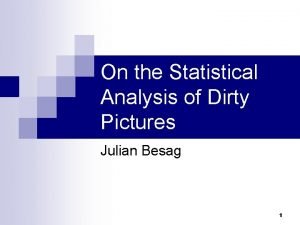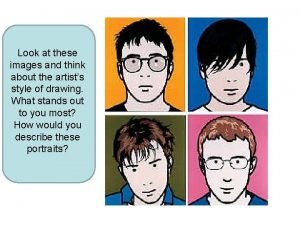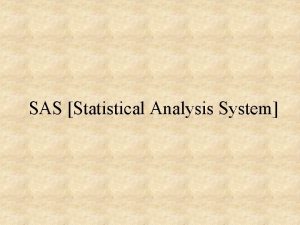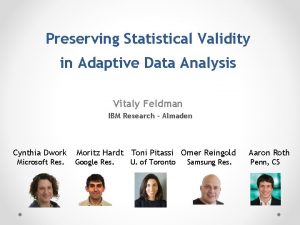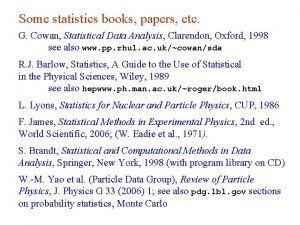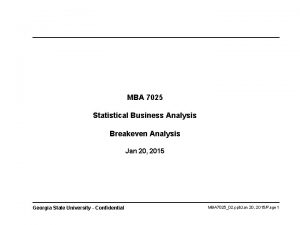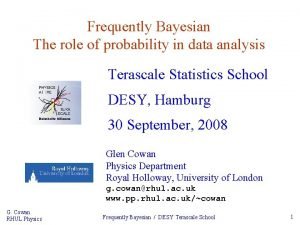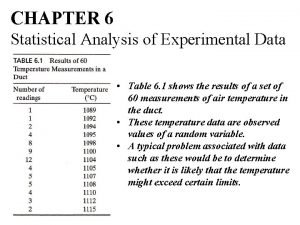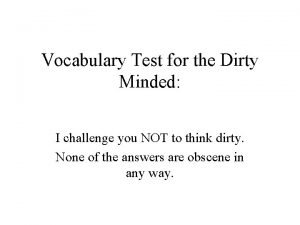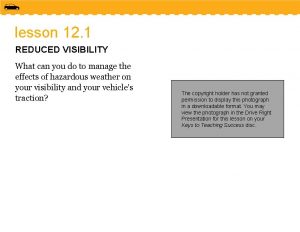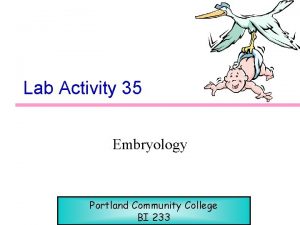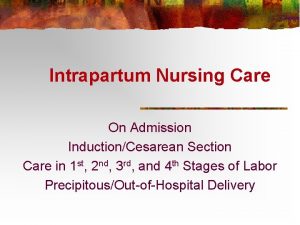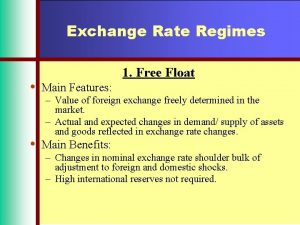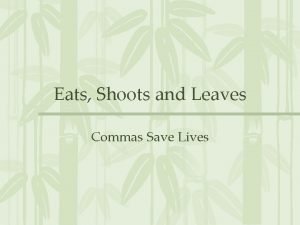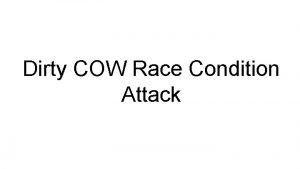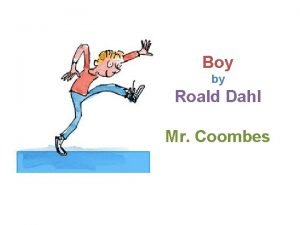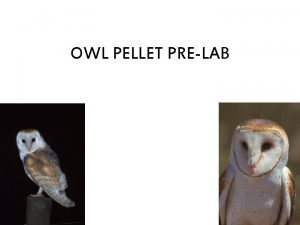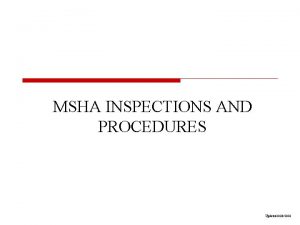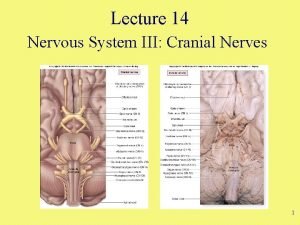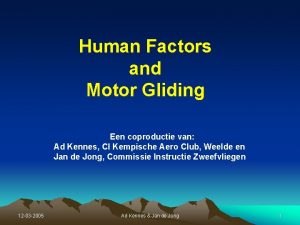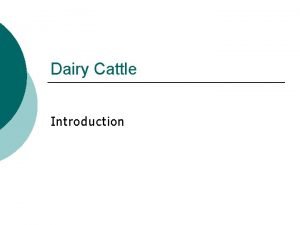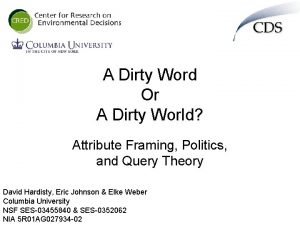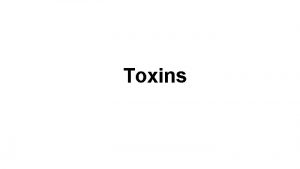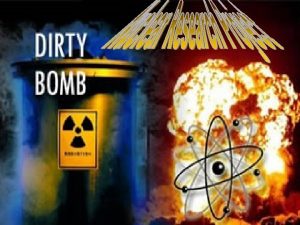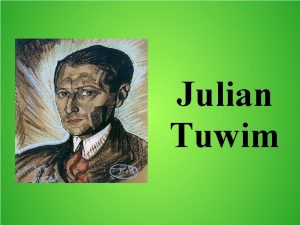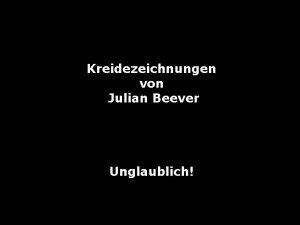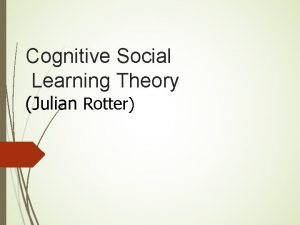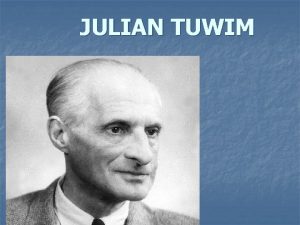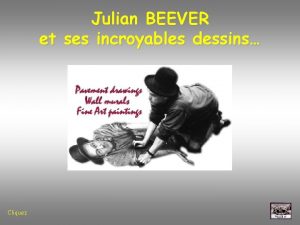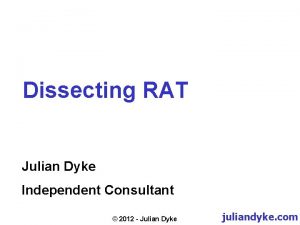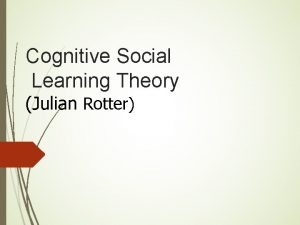On the Statistical Analysis of Dirty Pictures Julian





























- Slides: 29

On the Statistical Analysis of Dirty Pictures Julian Besag 1

Image Processing n Required in a very wide range of practical problems ¨ Computer vision ¨ Computer tomography ¨ Agriculture ¨ Many more… n Picture acquisition techniques are noisy 2

Problem Statement Given a noisy picture n And 2 source of information (assumptions) n ¨A multivariate record for each pixel ¨ Pixels close together tend to be alike n Reconstruct the true scene 3

Notation S – 2 D region, partitioned into pixels numbered 1…n n x = (x 1, x 2, …, xn) – a coloring of S n x* (realization of X) – true coloring of S n y = (y 1, y 2, …, yn) (realization of Y) – observed pixel color n 4

Assumption #1 n Given a scene x, the random variables Y 1, Y 2, …, Yn are conditionally independent and each Yi has the same known conditional density function f(yi|xi), dependent only on x i. n Probability of correct acquisition 5

Assumption #2 n The true coloring x* is a realization of a locally dependant Markov random field with specified distribution {p(x)} 6

Locally Dependent M. r. f. s Generally, the conditional distribution of pixel i depends on all other pixels, {Si} n We are only concerned with local dependencies n 7

Previous Methodology Maximum Probability Estimation n Classification by Maximum Marginal Probabilities n 8

Maximum Probability Estimation n Chose an estimate x such that it will have the maximum probability given a record vector y. In Bayesian framework x is MAP estimate n In decision theory – 0 -1 loss function n 9

Maximum Probability Estimation Iterate over each pixel n Chose color xi at pixel i from probability n n Slowly decreasing T will guarantee convergence 10

Classification by Maximum Marginal Probabilities n Maximize the proportion of correctly classified pixels Note that P(xi | y) depends on all records n Another proposal: use a small neighborhood for maximization n ¨ Still computationally hard because P is not available in closed form 11

Problems n Large scale effects ¨ Favors n scenes of single color Computationally expensive 12

Estimation by Iterated Conditional Modes n n The previously discussed methods have enormous computational demands, and undesirable large-scale properties. We want a faster method with good large-scale properties. 13

Iterated Conditional Modes n When applied to each pixel in turn, this procedure defines a single cycle of an iterative algorithm for estimating x* 14

Examples of ICM n Each example involves: ¨c unordered colors ¨ Neighborhood is 8 surrounding pixels ¨ A known scene x* ¨ At each pixel i, a record yi is generated from a Gaussian distribution with mean and variance κ. 15

The hillclimbing update step 16

Extremes of β β = 0 gives the maximum likelihood classifier, with which ICM is initialized n β = ∞, xi is determined by a majority vote of its neighbors, with yi records only used to break ties. n 17

Example 1 n 6 cycles of ICM were applied, with β = 1. 5 18

Example 2 n n n Hand-drawn to display a wide array of features yi records were generated by superimposing independent Gaussian noise, √κ =. 6 8 cycles, β increasing from. 5 to 1. 5 over the 1 st 619

Models for the true scene Most of the material here is speculative, a topic for future research n There are many kinds of images possessing special structures in the true scene. n What we have seen so far in the examples are discrete ordered colors. n 20

Examples of special types of images n Unordered colors ¨ These are generally codes for some other attribute, such as crop identities n Excluded adjacencies ¨ It may be known that certain colors cannot appear on neighboring pixels in the true scene. 21

More special cases… n Grey-level scenes ¨ Colors may have a natural ordering, such as intensity. The authors did not have the computing equipment to process, display, and experiment with 256 grey levels. n Continuous intensities ¨ {p(x)} is a Gaussian M. r. f. with zero mean 22

More special cases… n Special features, such as thin lines ¨ Author had some success reproducing hedges and roads in radar images. n Pixel overlap 23

Parameter Estimation This may be computationally expensive n This is often unnecessary n We may need to estimate θ in l(y|x; θ) n ¨ Learn n how records result from true scenes. And we may need to estimate Φ in p(x; Φ) ¨ Learn probabilities of true scenes. 24

Parameter Estimation, cont. n n Estimation from training data Estimation during ICM 25

Example of Parameter Estimation n n Records produced with Gaussian noise, κ =. 36 Correct value of κ , gradually increasing β gives 1. 2% error Estimating β = 1. 83 and κ =. 366 gives 1. 2% error κ known but β = 1. 8 estimated gives 1. 1% error 26

Block reconstruction n n Suppose the Bs form 2 x 2 blocks of four, with overlap between blocks At each stage, the block in question must be assigned one of c 4 colorings, based on 4 records, and 26 direct and diagonal adjacencies: 27

Block reconstruction example Univariate Gaussian records with κ =. 9105 n Basic ICM with β = 1. 5 gives 9% error rate n ICM with β = ∞ estimated gives 5. 7% error n 28

Conclusion n We began by adopting a strict probabilistic formulation with regard to the true scene and generated records. We then abandoned these in favor of ICM, on grounds of computation and to avoid unwelcome large-scale effects. There is a vast number of problems in image processing and pattern recognition to which statisticians might usefully contribute. 29
 On the statistical analysis of dirty pictures
On the statistical analysis of dirty pictures Opie
Opie Columbia pictures universal pictures
Columbia pictures universal pictures Columbia pictures and paramount pictures
Columbia pictures and paramount pictures Statistical analysis system
Statistical analysis system Preserving statistical validity in adaptive data analysis
Preserving statistical validity in adaptive data analysis Multivariate statistical analysis
Multivariate statistical analysis Cowan statistical data analysis pdf
Cowan statistical data analysis pdf Statistical business analysis
Statistical business analysis Marketing analytics software r
Marketing analytics software r Cowan statistical data analysis pdf
Cowan statistical data analysis pdf Statistical analysis of experimental data
Statistical analysis of experimental data Are you dirty minded quiz
Are you dirty minded quiz Andrew gonce
Andrew gonce Overdriving headlights means
Overdriving headlights means Dirty duncan placenta
Dirty duncan placenta Dirty duncan and shiny schultz
Dirty duncan and shiny schultz 3 inch fire hose
3 inch fire hose Crawling peg
Crawling peg Dirty float exchange rate
Dirty float exchange rate Save the comma
Save the comma Dirty cow attack
Dirty cow attack Mr coombes description
Mr coombes description Site:slidetodoc.com
Site:slidetodoc.com Paraphrase in a sentence
Paraphrase in a sentence Youtube dirty jobs owl pellets
Youtube dirty jobs owl pellets Msha dirty dozen
Msha dirty dozen On old olympus towering tops
On old olympus towering tops Dirty dozen human factors nederlands
Dirty dozen human factors nederlands Dirty jobs dairy cow midwife worksheet
Dirty jobs dairy cow midwife worksheet
